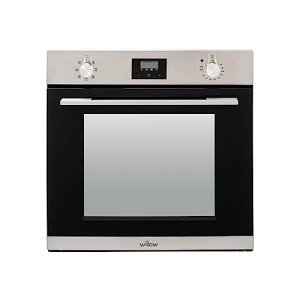5 Killer Quora Answers On Builtin Oven
페이지 정보

본문
The Comprehensive Guide to Built-In Ovens: Features, Benefits, and FAQs
Built-in ovens are a popular option for modern-day cooking areas, providing adaptability, performance, and a smooth design that incorporates effortlessly into cabinetry. This short article will dig into the various aspects of built-in ovens, including their functions, benefits, installation alternatives, upkeep suggestions, and answers to frequently asked questions.

What is a Built-In Oven?
A built-in oven is designed to be installed within kitchen cabinetry and is readily available in different setups, such as single or double ovens. Unlike freestanding ovens, built-in designs offer a structured appearance and provide more flexibility in kitchen design. They can be found in electric, gas, and steam alternatives, catering to a series of cooking preferences.
Features of Built-In Ovens
Built-bulit in oven ovens are packed with functions that boost cooking experiences. Here are some of the most common functions to consider:
| Feature | Description |
|---|---|
| Self-Cleaning | Numerous models consist of a self-cleaning function that burns off residue at heats, streamlining upkeep. |
| Convection Cooking | This feature utilizes a fan to distribute hot air, cooking food more equally and quickly. |
| Smart Technology | Some ovens come equipped with Wi-Fi connectivity, allowing users to control the oven from another location through mobile phone. |
| Several Cooking Modes | Consist of alternatives such as baking, broiling, roasting, and air frying, offering flexibility for different meals. |
| Temperature Probe | Keeps track of the internal temperature of food, guaranteeing completely cooked meals whenever. |
| Sleek Design Options | Available in different finishes (stainless steel, black, white) to match kitchen design. |
Advantages of Built-In Ovens
The setup of a built-in oven brings various advantages to any kitchen:
- Space Efficiency: Built-in ovens take full advantage of kitchen space, offering a clean and orderly appearance without sacrificing performance.
- Boosted Cooking Performance: With innovative functions like convection cooking and exact temperature level controls, built-in ovens frequently outshine conventional designs.
- Style Flexibility: These ovens can be installed at eye level, enabling easy gain access to without bending down, which can be especially useful for people with physical constraints.
- Enhanced Resale Value: A well-designed kitchen with premium built-in appliances might attract potential purchasers, improving total residential or commercial property value.
- Customization Options: Many brand names offer adjustable styles that fit the particular measurements and aesthetic of individual kitchen areas.
Installation Options
When picking a built-in builtin oven - you could try here,, understanding the installation alternatives is vital. Here are the most common configurations:
Single Built-In Oven: Ideal for smaller kitchen areas, these systems use enough area to prepare a variety of meals at the same time, ideal for everyday cooking.
Double Built-In Oven: Best fit for avid cooks and large households, double ovens permit simultaneous cooking at 2 various temperatures, perfect for meals that need diverse cooking approaches.
Mix Steam and Oven: A hybrid option that combines the benefits of conventional baking with steam cooking. This option is outstanding for retaining wetness in foods, making it best for baking bread or roasting meats.
Maintenance Tips for Built-In Ovens
Maintaining a built-in oven is essential for its longevity and optimal efficiency. Here are some practical upkeep suggestions:
Regular Cleaning: Use the self-cleaning feature when essential, and wipe down the outside and interior surface areas frequently to prevent grease buildup.
Examine the Seals: Inspect the oven door seals for any wear or damage to ensure proper insulation and cooking efficiency.
Temperature level Calibration: Occasionally check the temperature level precision using an integrated oven thermometer, specifically if cooking times seem longer than normal.
Ventilation: Ensure adequate ventilation around the oven to prevent getting too hot, especially for built-in designs that may be surrounded by kitchen cabinetry.
Frequently Asked Questions About Built-In Ovens
1. Are built-in integrated ovens uk more pricey than freestanding models?Yes, built-in ovens tend to be more costly due to their design, setup requirements, and additional features. However, their benefits can justify the cost in the long run.
2. Can you set up a built-in oven yourself?While some useful individuals may try to install a built-in oven, it is suggested to hire a professional to guarantee correct setup, ventilation, and safety standards.
3. What is the average life-span of a built-in oven?The typical lifespan of a built-in oven built in is around 10 to 15 years, depending on use and upkeep. Routine care can assist extend its durability.
4. Are built-in ovens energy effective?Lots of modern-day built-in ovens are developed with energy efficiency in mind, integrating features like insulation and precise temperature controls that might lower energy consumption compared to older designs.
5. Can a built-in oven be repaired if it breaks?Yes, built-in ovens can typically be fixed. It is suggested to get in touch with a qualified technician for medical diagnoses and repairs to guarantee security and builtin Oven compliance with guarantee contracts.
Built-in ovens are an exceptional addition to any modern kitchen, supplying a combination of style, performance, and advanced cooking functions. With the right knowledge about their features, benefits, and upkeep, homeowners can make educated options to boost their culinary experiences. As kitchen style trends continue to evolve, the built-in oven stays a staple for those looking to blend visual appeals with performance in their cooking areas.
- 이전글15 Up-And-Coming Railroad Settlement Bloggers You Need To Follow 25.05.19
- 다음글5 Killer Quora Answers To Single Ovens Electric 25.05.19
댓글목록
등록된 댓글이 없습니다.



